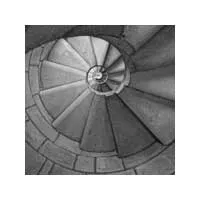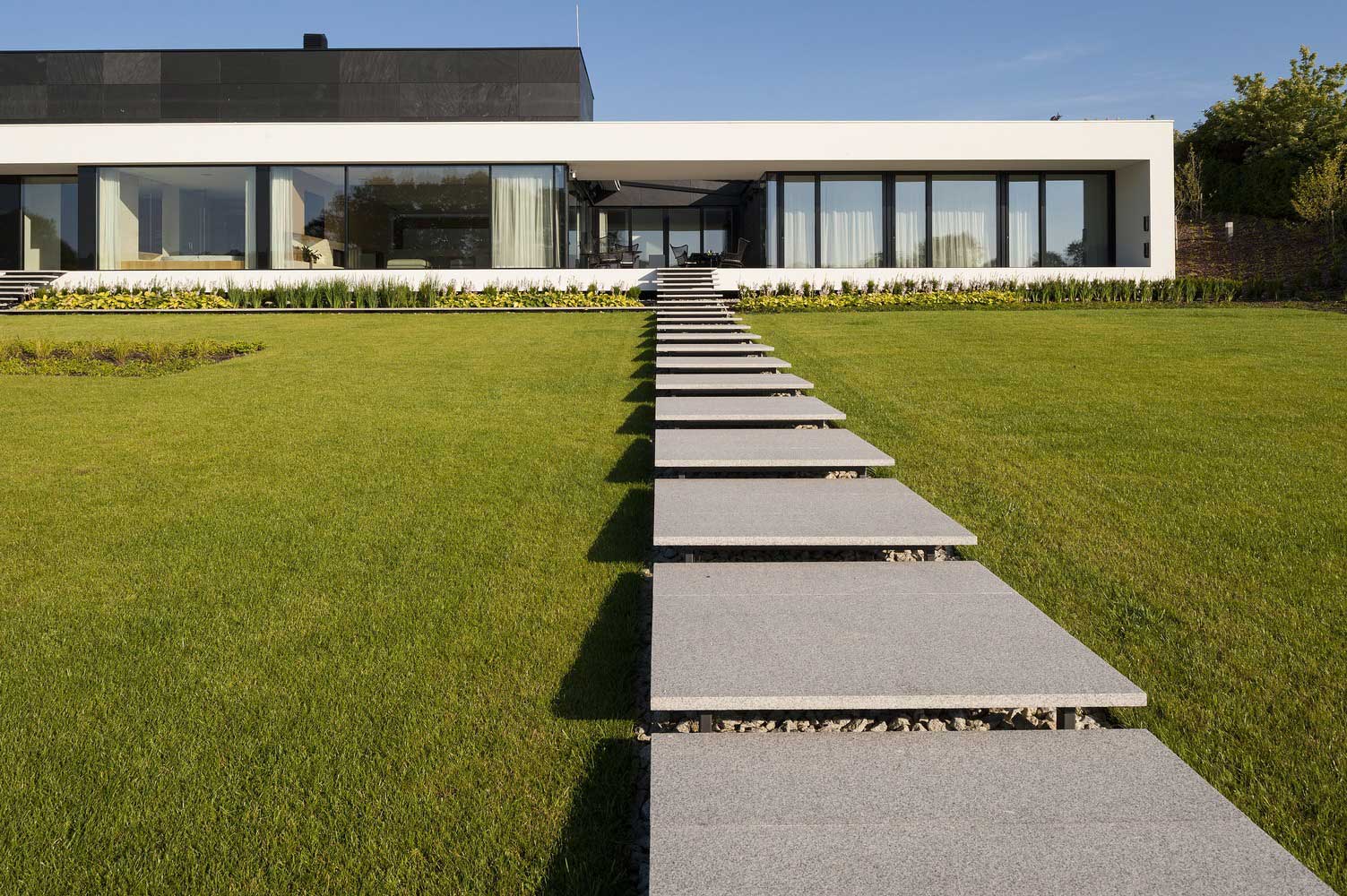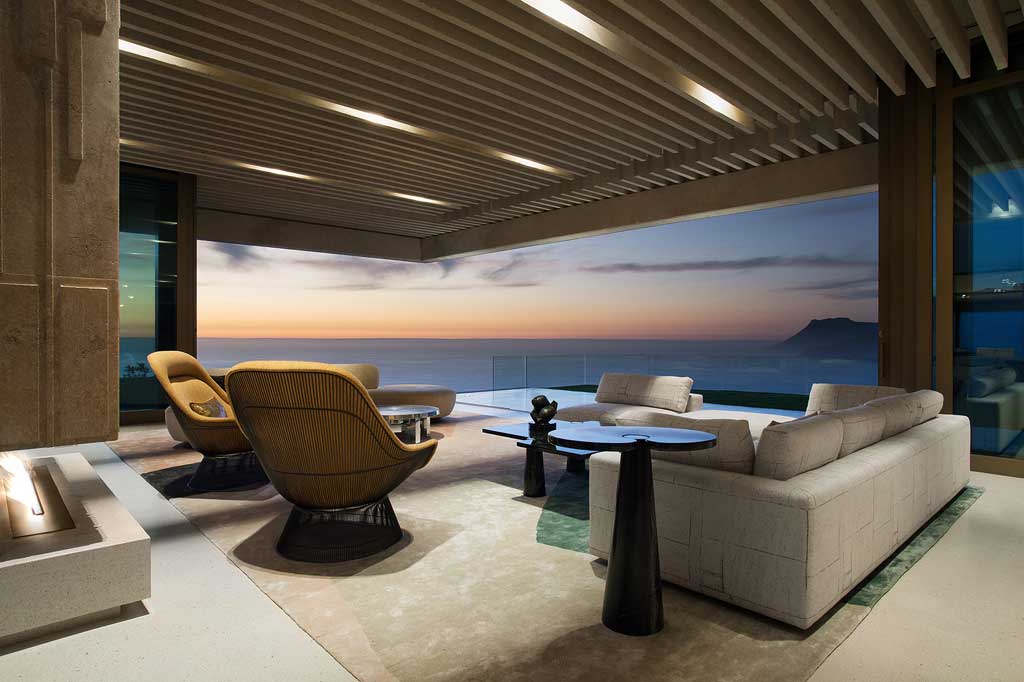Content
In the embrace of nature’s undulating arms, a dwelling rises, not as an imposition but as a gentle whisper that complements the topography it inhabits. This is a tale of architecture that does not conquer but converses with the contours of the land, where stone retaining walls stand as testament to the beauty of integration and serene courtyards beckon with their tranquil allure. Here, the built environment and the natural landscape are not just adjacent entities but are interwoven in a delicate dance of form and function.








Stone Retaining Walls
The stone retaining walls are the backbone of this architectural marvel, a series of undulating barriers that echo the rolling hills they adorn. Crafted from the very earth they hold, these walls are a patchwork of the local geology, showcasing shades and textures that change with the day’s light. They are not just functional; they are narrative, telling a story of a place where buildings grow from the ground, organically and respectfully.
Each wall is a canvas, displaying the artistry of masonry and the timeless strength of stone. They provide the framework for terraced gardens, where the greenery cascades like a verdant waterfall, softening the hard lines of the architecture. The walls serve as a constant reminder of the home’s commitment to sustainability, their mass providing natural insulation and their presence a symbol of durability.
The stone walls also carve out intimate outdoor spaces, creating courtyards that are both open to the sky and enclosed for privacy. These are spaces of contemplation and gathering, where the coolness of the stone underfoot is matched by the warmth of the sun overhead. The walls stand guard, a bulwark against the elements, but also a welcoming embrace, guiding one into the heart of the home.
In the interplay between the built and the natural, the stone retaining walls are a mediator. They allow the home to step down the slope, a staircase of rooms and vistas that invite exploration and discovery. The walls are the connective tissue between the home’s various levels, providing a journey that is as much about moving through space as it is about moving through states of being.








Serene Courtyards
The courtyards are sanctuaries of serenity, outdoor rooms carved from the landscape and defined by the stone walls that cradle them. They are the lungs of the home, open to the sky, where the air is fresh and the mind can soar. In these courtyards, one finds a retreat from the world, a place where time seems to slow and the chatter of daily life fades into the background.
Each courtyard is a unique setting, some basking in the full glory of the sun, others shaded and cool, offering respite from the heat. They are communal and private, places for social gatherings or solitary reflection. The sound of water is often present, a fountain or a stream that adds its voice to the symphony of nature that permeates the space.
The courtyards are also a dialogue between indoors and out, with doors and windows opening onto them, blurring the boundaries of inside and outside. They extend the living space, making the entire site the home. The courtyards become stages for the drama of daily life, from the quiet coffee at dawn to the laughter-filled dinners under the stars.
In these serene spaces, the use of stone is softer, more refined. It is in the details—the coping of a wall, the edge of a path—that the material speaks of care and consideration. The courtyards are not just designed; they are curated, each element chosen to foster peace and well-being.






Integration with Topography
The home’s design is a testament to the philosophy that architecture should enhance, not dominate, the natural landscape. The integration with topography is achieved through thoughtful siting, where each level of the home is carefully placed to follow the natural slope of the land. This approach minimizes the need for extensive earthmoving, preserving the integrity of the site and reducing the environmental impact of the construction.
The terraced design, supported by the stone retaining walls, allows for a gradual ascent through the property, revealing different aspects of the home and landscape at each turn. The architecture becomes a journey, with the topography as a guide, leading one through a variety of spatial experiences. The home is not just a static entity but a dynamic one, changing as one moves through it, always in dialogue with the land.
This integration extends to the management of water and soil, with the topography and retaining walls working together to prevent erosion and manage stormwater. The design is not just aesthetic but also ecological, a system that works with the cycles of nature to create a sustainable habitat for both humans and the local flora and fauna.
The result of this integration is a home that feels like it belongs, as if it has always been a part of the landscape. It is a humble acknowledgment that architecture is at its best when it listens to and learns from the environment in which it exists.




Stone as a Living Material
In this home, stone is not a cold, inert material but a living one, changing with the light, the weather, and the seasons. The retaining walls, built from locally sourced stone, carry the color and texture of the landscape into the architecture, creating a sense of continuity between the built and the natural.
The stone’s thermal mass helps to regulate the temperature within the home, absorbing heat during the day and releasing it at night. This passive solar design is both ancient and modern, a time-tested technique that reduces the need for mechanical heating and cooling, aligning the home with the principles of sustainable design.
The tactile quality of the stone also adds a sensory dimension to the home. The roughness of a wall, the smoothness of a floor, the coolness of a step—each encounter with the stone is a reminder of the earth from which it came. The stone is a grounding presence, anchoring the home in the here and now.




Courtyards as Ecosystems
The courtyards are not just architectural features but ecosystems, microcosms of the larger landscape. They are planted with native species that require minimal irrigation, creating habitats for local wildlife and contributing to the biodiversity of the area.
The courtyards also serve as outdoor living rooms, extensions of the interior spaces that open up to the sky and the elements. They are places where the indoors and outdoors merge, where the boundaries between human and nature are blurred.
The design of the courtyards is informed by the path of the sun, the direction of the wind, and the flow of water, creating microclimates that are comfortable year-round. They are spaces that are alive, that breathe, that evolve over time.
This home is a celebration of the land, a design that rises from the topography with stone retaining walls and unfolds into serene courtyards. It is a place where architecture is not imposed but discovered, where the home is a natural outgrowth of the landscape. In this residence, the earth speaks, and the architecture listens, resulting in a living space that is sustainable, beautiful, and deeply rooted in its place.






